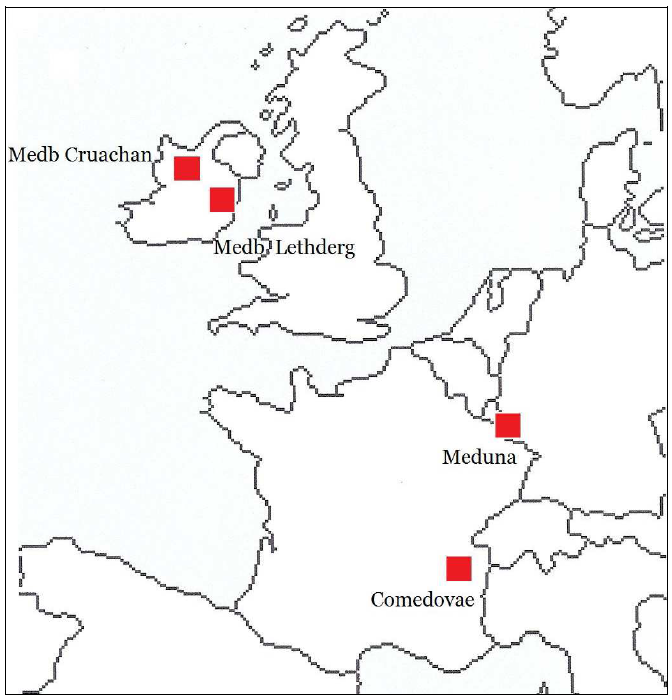b) Meduna
An inscription discovered at the hot spring of Bad Bertrich near Trier (Germany) mentions a goddess called Meduna. The inscription, housed in the Museum of Trier, is the following: De(abus) Vercan(a)e et Medun(a)e L(ucius) T(…) Acceptus v(otum) s(olvit) l(ibens) m(erito), ‘To the goddesses Vercana and Meduna, Lucius T(…) Acceptus paid his vow willingly and deservedly’.2350 The dedicator has Latin names and is a Roman citizen, since he bears the tria nomina. The goddess Meduna (*medu-ono or *medu-ana, with the dropping of the o or a) is etymologically related to the Irish Goddess Medb and to the Comedovae. She may thus be understood as a goddess personifying mead and sovereignty. In this dedication, she is associated with the goddess Vercana (‘Fury’ or ‘Rage’), who occurs in another inscription from Ernstweiler (Moselle), and must be a goddess embodying war-like feelings (see Chapter 3).2351 Vercana and Meduna may have been healing water-goddesses presiding over the curative springs at Bad Bertrich, where Gallo-Roman spa installations were excavated.2352 Moreover, the association in an inscription of a goddess of war and a goddess of mead-intoxication and sovereignty is not insignificant, for it can be taken to illustrate the close link between intoxication, sovereignty, war and protection of the territory.
